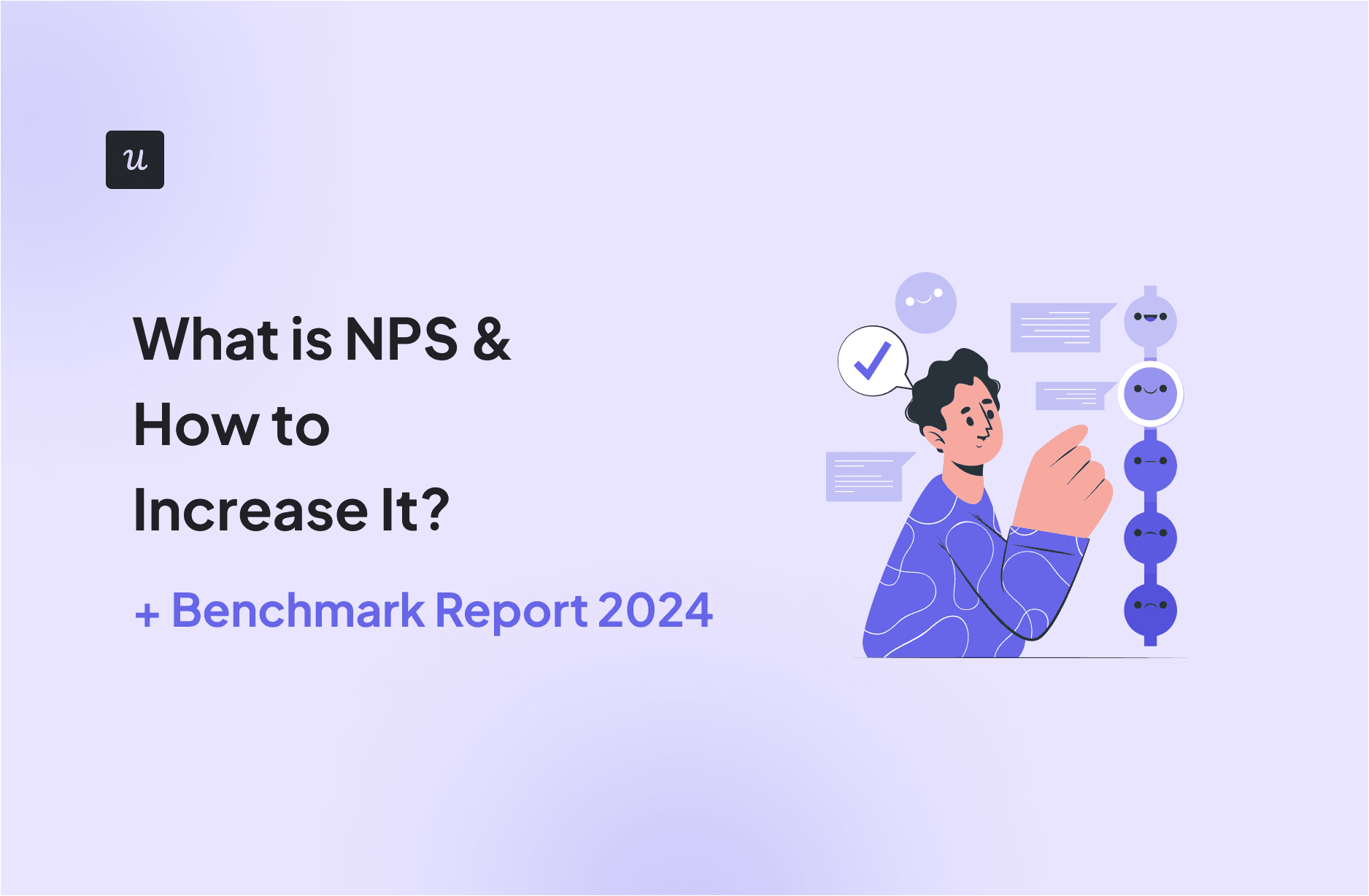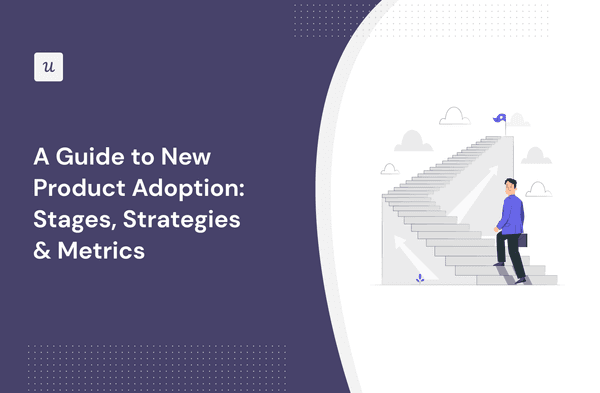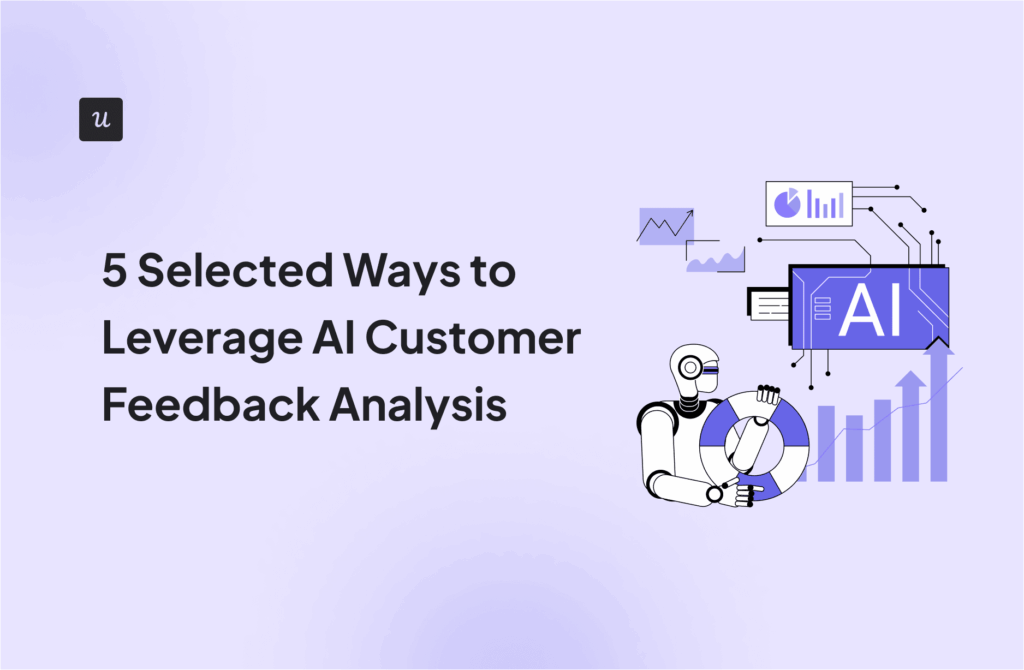
According to our latest NPS benchmark report, the average NPS in SaaS is 35.7.
But how does your business fare against these product metrics benchmarks?
Let’s explore our product metrics benchmark and learn:
- What NPS is and why it’s important for SaaS businesses.
- The average NPS rates across different industries, company sizes, and growth strategies.
- Effective strategies to improve your company’s NPS.


Try Userpilot Now
See Why 1,000+ Teams Choose Userpilot

What is NPS?
Net Promoter Score (NPS) is a customer loyalty metric that measures how likely your customers are to recommend your product or service to others.
It is calculated by subtracting the percentage of detractors (those who rate their likelihood from 0-6) from the percentage of promoters (those who rate their likelihood from 9-10).
The score ranges from -100 to 100, providing a clear indication of customer satisfaction and loyalty.

Why is NPS important for SaaS businesses?
Net Promoter Score (NPS) is crucial for SaaS businesses as it directly correlates with customer satisfaction, positive word-of-mouth, and loyalty—which are essential for product growth.
Not only that, there are many other reasons why measuring NPS is important:
- Customer Feedback: Provides actionable insights from customers about what they like or dislike.
- Benchmarking: Provides a quantitative measure you can not only compare against other companies but also your past self.
- Retention Rates: Helps identify at-risk customers and improve retention strategies.
- Revenue Growth: High NPS is often correlated with higher revenue growth due to increased retention.
- Customer Acquisition: Promoters can become brand advocates, driving new customer acquisition through word-of-mouth.
What is the average NPS rate for SaaS companies?
For our NPS benchmark report for 2024, we studied 229 B2B SaaS companies to learn about their NPS performance.
The overall metrics included:
- Average NPS: 35.7
- Median NPS: 39

Now, this report also reveals diverse NPS rates across various segments within the SaaS industry. These segments include industry type, company size, and growth strategy approach (PLG vs SLG), and here are the insights we found:
Average rate by industry
The NPS rates vary significantly across different niches within the technology sector. Some of them due to the
Here are the average NPS scores by industry:
- EdTech: 47.5
- MarTech: 41
- FinTech & Insurance: 40
- HR: 39.8
- CRM & Sales: 38.6
- Healthcare: 25.6
- AI & ML: 23.5

The data shows that the EdTech, MarTech, and FinTech industries have the highest NPS rates, while Healthcare and AI & ML have lower NPS rates.
EdTech’s high NPS score reflects a strong alignment with user needs and effective engagement strategies—probably due to popular gamification elements in the learning process, etc.
While the lower scores in Healthcare and AI & ML may be due to regulatory complexities and unmet expectations.
Average rate by company size
The size of the company turns out to be another factor that affects NPS, with bigger companies generally enjoying higher scores.
But there’s an exception. Here are the average NPS scores by company size:
- $1M – $5M: 34.5
- $5M – $10M: 23.3
- $10M – $50M: 37.5
- $50M+: 39.2

NPS seems to increase with a company’s revenue.
The largest companies ($50M+) benefit from robust customer service frameworks and extensive resources, enabling them to maintain higher satisfaction levels. Companies in the $5M – $10M range face more challenges in maintaining high customer satisfaction, possibly due to scaling issues and resource constraints.
However, the smaller companies didn’t score lower, but higher. And it’s probably due to the greater flexibility that exists at earlier stages, which allows them to provide a better service to their customers before they face the scaling challenges.
Average rate by PLG and SLG
On the other hand, comparing NPS rates between Product-Led Growth (PLG) and Sales-Led Growth (SLG) companies didn’t say much. Here are the average NPS scores:
- PLG companies: 35.4
- SLG companies: 35.06

PLG companies got slightly higher NPS scores than SLG companies, which isn’t really significant and probably means that both growth models are equally effective at incentivizing loyalty and word-of-mouth.
How to improve the average NPS rate at your company?
Improving your company’s NPS involves various strategies aimed at enhancing customer satisfaction and loyalty. Here are effective strategies to achieve this:
Learn about detractors’ pain points with a follow-up question
Getting additional feedback from detractors can help you see opportunities for improvements and make better efforts to improve your product.
For this, trigger follow-up questions to detractors who score low on the NPS survey to gather qualitative feedback. Ask open-ended questions about their pain points to understand their dissatisfaction and address these issues effectively.
For example, if a detractor mentions slow customer support, you can focus on improving your support response times to avoid building more detractors.

Tag NPS responses to identify the main areas of dissatisfaction
Once you start collecting a great amount of qualitative NPS responses, you need to find a way to filter them to spot repeating patterns.
For this, you can use tools like Userpilot to tag and categorize NPS responses. This way, you can identify common themes and areas of dissatisfaction among detractors and promoters without having to scroll through your database.
For example, if many detractors mention a specific feature’s usability, prioritize improving that feature to make it more intuitive and user-friendly.

Segment detractors to proactively turn them into promoters
NPS surveys make it easy to identify and segment promoters, neutrals, and detractors.
When segmenting your detractors based on their NPS scores, you can provide targeted support to address their concerns, solve their specific obstacles, and help them see the value of your product.
To do this:
- Use segmentation tools to group detractors.
- Offer proactive support to prevent more problems from happening.
- Provide personalized help to make them experience your product’s value.
- Monitor the impact of these efforts with NPS surveys.
As a result, you can reduce the number of detractors for your brand and potentially turn them into promoters.

Replicate the experience of your promoters for the detractors
Now, you don’t only need to analyze detractors. There’s also a lot you can learn from your promoters.
For this, analyze the user journey of your promoters with tools like path analysis, and behavioral data. Identify the key touchpoints and understand what actions led them to experience more value from your product.
Then, try to replicate their positive experiences on the rest of the users. You can trigger in-app messages to guide the rest of the users through similar paths and help them experience success.
For instance, if promoters frequently use a particular feature successfully, create tutorials to help detractors use it effectively.
Conclusion
Understanding and improving your NPS is vital for driving customer satisfaction and loyalty in your business.
By leveraging NPS benchmark data, segmenting responses, and implementing targeted strategies, you can enhance your NPS and foster long-term growth.
That said, why not book a Userpilot demo today to see how you can send NPS surveys, tag responses, and optimize customer advocacy?








